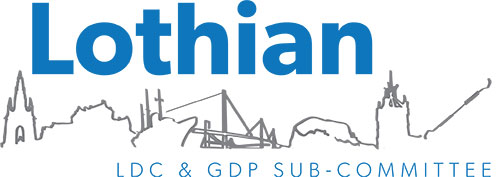Conference
During the Chair’s welcome and opening remarks, she referred to Section 3 of the Standing Orders of Conference, ‘Appointment of LDC Representatives’, explaining that Conference was looking at ways of inviting more delegates and younger members to conference and how to make better use of all available delegate positions, especially for LDCs which are not represented. This issue had been discussed at last year’s Conference. N Kaya had subsequently written to all LDC Secretaries on the matter. The Chair noted that Greater Glasgow and Clyde, Lanarkshire and Tayside LDCs had responded declining the offer to send more delegates. Their decision was based on the additional costs sending more delegates would accrue. The Chair also noted that this year in response to previous feedback, all committee papers including the 2017 motions had been issued to delegates and guests electronically in advance of Conference. The Chair also urged LDCs to submit their motions to BDA Scotland as near to the six weeks prior to Conference deadline as possible. By doing this, it allows the Conference Agenda Committee to review the motions, and make any necessary amendments in order to be able to include them with the Conference papers.
Chief Dental Officer
Margie Taylor, CBE, Chief Dental Officer (CDO) was Conference’s first speaker and began by referring to the Scottish Government’s Consultation – ‘The Future of Oral Health’ and explaining that the profession was ‘on a journey to a new pathway and a new action plan’.
She thanked all of the profession who had contributed to the Scottish Government Workshops, focus groups and webinars, but noted her disappointment at the lack of younger dentists’ attendance at the workshops, and asked conference to provide her with ideas as to how government could better engage with that cohort since the new action plan will affect their future working life. There was a brief discussion about the proposals for a BDA young dentists committee in Scotland.
The CDO provided some early feedback on results collated from the online responses, noting the important issues: access to the NHS, quality of care, the need to address inequalities, focus on prevention, protected learning time and a preventative pathway for patients aged 18 years plus as well as the need to implement an oral health risk assessment. The CDO said she was not in favour of a ‘big bang’ solution and wanted to move forward by way of gradual change. The next stage in the process for Scottish Government was to collate all the information received, decide on priorities and compile a document which is expected to be ready later in the year. A lively question and answer session took place.
General Dental Council
Matthew Hill, Executive Director of Strategy, GDC referred to the GDC’s ‘Shifting the Balance: a better fairer system of dental regulation’ consultation.
M Hill spoke about the scope of regulation that the GDC must adhere to and the components of regulation. He said there was a need to reform, and that the GDC’s model needed to change. He referred to the four components of regulation: Education, Registration, Standards (CPD) and Fitness to Practise. He spoke about the GDC’s Agenda for Change and their proposals to ‘upstream’ functions to work better with patients, the profession and others by way of ‘First Tier Resolutions’ with expanded access to independent complaints resolution. M Hill also talked about plans to refocus the Fitness to Practice process by re-articulating the serious nature of the impaired fitness to practise and to reflect upon the GDC’s policies, procedures and public interfaces. This was followed by another lively question and answer session.
Scottish Association of Local Dental Committees (SALDC)
Gordon Morson, recently elected Chair of the SALDC gave a short presentation on the work of the SALDC over the last 12 months.
G Morson reported that the SALDC had met with Hew Mathewson, Chair of the Scottish Dental Practice Board in person and by Skype with Jonathon Green, Executive Director GDC. Both had been useful meetings. He also spoke about the challenges facing the SALDC, such as: representation, funding, agreeing a mandate and how to deal with the current political uncertainties. He then referred to the SALDC’s current activities which included addressing Conference motions, continuing work on the SALDC stress survey and lobbying Scottish Ministers. G Morson suggested that the SALDC may decide at a future date to put forward a motion for the SALDC to best represent the profession. He also spoke about how best the SALDC could contact and communicate with younger dentists to encourage them to get involved with dental politics. He suggested that NHS Boards, BDA Scotland and Scottish Government could work together to set up a Scotland-wide email list. There was a brief question and answer session.
Scottish Dental Fund
John Craig, Chair, and Jim Law, Treasurer of the Scottish Dental Fund gave a presentation on the Board’s finances.
J Craig noted that the SDF had recently moved to internet banking and that this was working well. He noted that SDF members had a difficult job in trying to forecast the levy based on previous year’s figures and assumptions. He asked that LDCs continue to contribute their levies, highlighting that it was important that the SDF meet their obligations to pay dentists and that the SDF did not want to operate at a deficit. Votes were carried by majority to keep the same SDF Board Honoraria for the Chair, Secretary and Treasurer as well as the SDPC Chair and Vice-Chair. Delegates passed a vote by majority to maintain the LDC levy of £2.40 per capita per month.
Conference Accounts
Elizabeth Glass, Conference Treasurer provided a report on the Conference accounts which were in good order. She also reminded Conference about the valuable service provided by the Dentists’ Health Support Programme.
